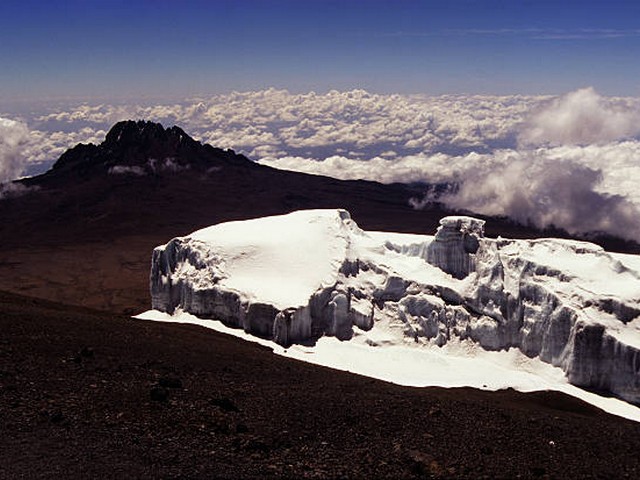Kilimanjaro Trekking For Sustainable Development: A Path to Nature, Culture, and Community Growth
Welcome to the Roof of Africa!
Imagine standing at the summit of Mount Kilimanjaro, the highest peak in Africa, surrounded by a canvas of cloud-draped skies and the vast, golden savannah stretching into the horizon. At Kilimanjaro Centre for Trekking and Ecotourism (KCTE), we believe that each step up this majestic mountain is not just a journey of personal challenge and discovery but also a stride towards sustainable development. Here’s how your adventure can foster environmental stewardship, cultural appreciation, and economic growth, all at once.
Unpacking Sustainability on the Slopes of Kilimanjaro
Ecological Responsibility: Protecting Kilimanjaro’s Delicate Ecosystem
Mount Kilimanjaro is not only a symbol of exhilarating adventure but also home to unique ecosystems. As trekkers and stewards of the environment, we at KCTE are committed to preserving the natural beauty and biodiversity of Kilimanjaro. Our guided treks emphasize minimizing environmental impact—practicing Leave No Trace principles, from carrying out waste to using energy-efficient resources. We are part of a broader conservation effort that includes reforestation initiatives and water conservation programs to ensure that the mountain remains vibrant and vital for generations to come.
Cultural Integrity: Embracing and Respecting Local Traditions
Kilimanjaro is steeped in rich cultural heritage. The Chagga people, among other indigenous groups, have lived on these slopes for centuries. At KCTE, we incorporate cultural education into our treks, offering trekkers an opportunity to learn about local customs, folklore, and the traditional ways of mountain life. By respecting and highlighting local culture, we help promote and preserve these invaluable traditions.
Economic Empowerment: Supporting Local Communities
Trekking Kilimanjaro is a powerful tool for local economic development. KCTE employs local guides, porters, and staff, ensuring fair wages and creating meaningful employment opportunities. Furthermore, we source supplies from local vendors, support artisan crafts in our gift shops, and encourage trekkers to engage with community-run businesses. This sustainable tourism model helps spread the economic benefits of tourism throughout the Kilimanjaro region.
The KCTE Experience: Trekking with Purpose
Personal Growth Meets Community Impact
Choosing to trek with KCTE isn’t just about the climb—it’s about making a positive impact. Our eco-friendly, culturally respectful, and community-oriented approach ensures that while you push your limits to reach the summit, you’re also contributing to sustainable development initiatives that benefit Mount Kilimanjaro and its surrounding communities.
Tailored Treks for Every Adventurer
Whether you’re a seasoned mountaineer or a curious newbie, KCTE offers a variety of trekking packages tailored to different fitness levels, preferences, and interests. All our treks are led by certified, experienced guides who prioritize safety, enjoyment, and education. Alongside our standard routes, we provide specialized eco-tours and cultural treks that delve deeper into the environmental conservation efforts and cultural heritage of the Kilimanjaro region.
Why Choose KCTE for Your Kilimanjaro Adventure?
At KCTE, we believe that trekking Kilimanjaro is more than an adventure; it’s a commitment to sustainable tourism. Here’s why you should book your climb with us:
- Commitment to Sustainability: We actively participate in and promote environmental conservation and community development.
- Expert and Passionate Team: Our guides, porters, and staff are not only experts in their fields but also deeply passionate about their roles in promoting sustainable tourism.
- Cultural Immersion: With KCTE, you experience Kilimanjaro through the eyes of its native inhabitants, gaining insights that go beyond the typical tourist experience.
Join Us in Making a Difference
Every step you take on Kilimanjaro with KCTE helps to further our mission of sustainable development. Ready to embark on an unforgettable journey that uplifts both you and the mountain communities? Book your trek today and be a part of something bigger than the climb—be a part of a movement towards a sustainable future.
Frequently Asked Questions
Q: What is the best time of year to climb Kilimanjaro?
A: The best times to climb Kilimanjaro are during the dry seasons, typically from late June to October and from late December to early March.
Q: How physically prepared do I need to be to undertake a Kilimanjaro trek?
A: While you don’t need to be an elite athlete, a moderate level of fitness is required. We recommend engaging in cardiovascular training like hiking, running, or cycling, and strength training several months before your trek.
Q: Can I participate in local conservation efforts during my trek?
A: Absolutely! We encourage trekkers to get involved in various conservation activities, including tree planting and water conservation projects. Speak with our team to learn how you can contribute.
Q: How does KCTE ensure the fair treatment of its porters and guides?
A: KCTE adheres to responsible tourism practices, ensuring fair wages, proper treatment, and adequate training for all our staff. We are committed to creating sustainable, beneficial employment opportunities within our community.
Embark on a Journey of Discovery and Development
Climbing Kilimanjaro with Kilimanjaro Centre for Trekking and Ecotourism (KCTE) offers more than just breathtaking views and unparalleled personal achievements. It is a step towards supporting sustainable practices that enhance the local environment, culture, and communities. Join us on this incredible adventure, where every step counts towards a greater good. Book your Kilimanjaro climbing experience with KCTE today, and be a part of pioneering sustainable development on Africa’s highest peak.




